Conflict Zones
‘Slippery slope’: How will Pakistan strike India as tensions soar? | India-Pakistan Tensions News
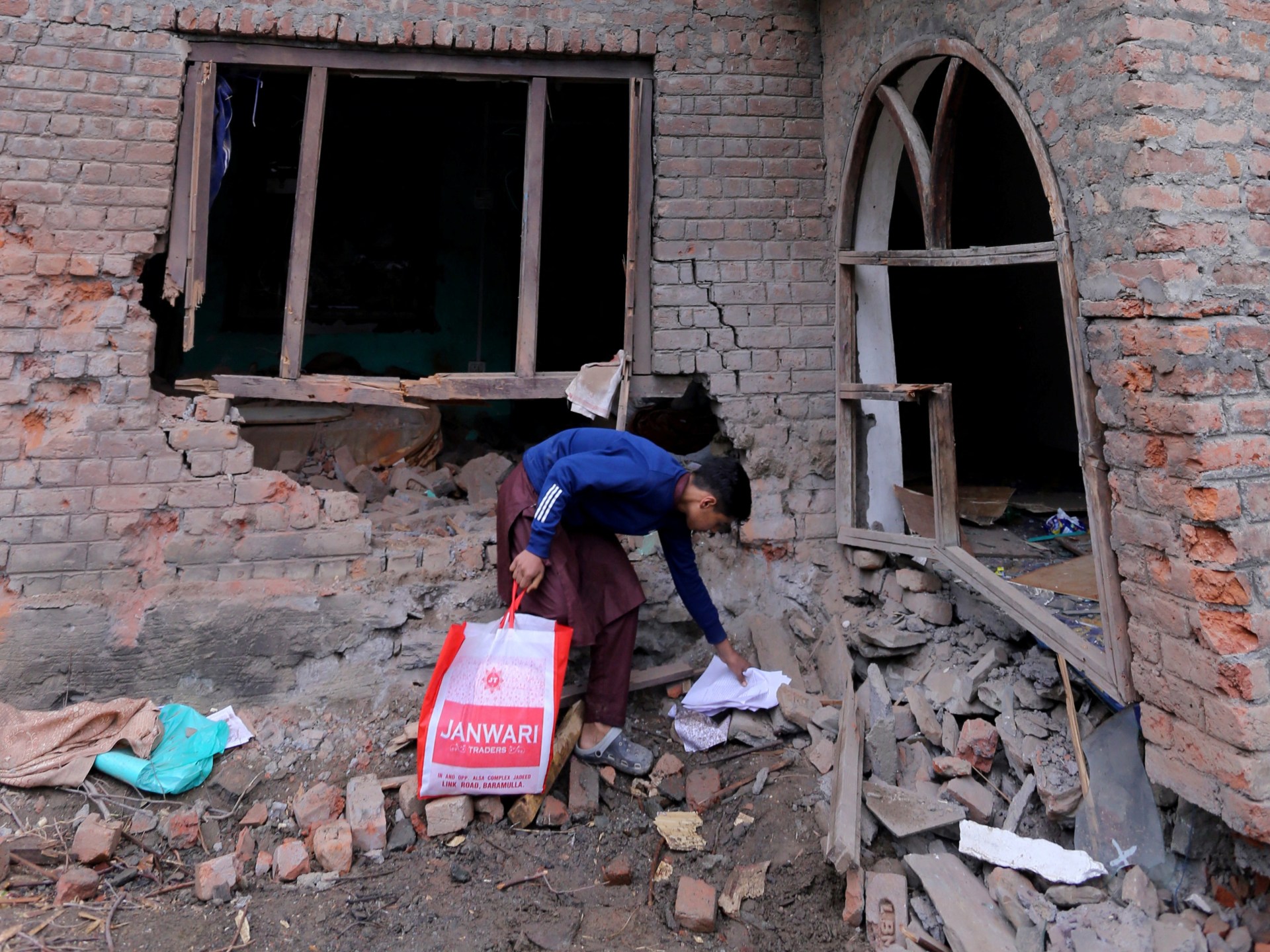
Islamabad, Pakistan – On Wednesday evening, as Pakistan grappled with the aftermath of a wave of missile strikes from India that hit at least six cities, killing 31 people, the country’s military spokesperson took to a microphone with a chilling warning.
“When Pakistan strikes India, it will come at a time and place of its own choosing,” Lieutenant General Ahmed Sharif Chaudhry said in a media briefing. “The whole world will come to know, and its reverberation will be heard everywhere.”
Two days later, India and Pakistan have moved even closer to the brink of war.
On Thursday, May 8, Pakistan accused India of flooding its airspace with kamikaze drones that were brought down over major cities, including Lahore and Karachi. India confirmed the drone assault, but said it was responding to a provocation from Pakistan — missiles and drones launched towards cities and air defence systems in India and Indian-administered Kashmir. Pakistan denied that charge, and subsequent accusations of missile and drone attacks on parts of Indian-administered Kashmir on Thursday night.
With Pakistan denying any missile or drone strikes against India, Chaudhry’s warning of upcoming retribution remains alive, hovering over the 1.6 billion people of South Asia, 17 days after armed gunmen killed 26 male civilians in Pahalgam, Indian-administered Kashmir, triggering the current escalation.
Experts say how Pakistan responds will likely be shaped by its desire to demonstrate that it can hurt India, without pushing the crisis over the edge into a full-blown conflict.
“We are still far away from a war, but we are much closer than we were 24 hours ago,” said Christopher Clary, assistant professor of political science at the University at Albany.

Next target: Military bases?
Clary said that the next “logical escalatory” step for both countries might be to target each other’s military bases.
“We have already seen this with air defence-focused strikes,” Clary told Al Jazeera, referring to the Indian drone attacks that tried to target Pakistani radar systems overnight on May 7-8, and New Delhi’s claims that Pakistan launched missiles and drones towards its military facilities.
“But I fear other strikes are likely in the next 24 hours. I think we are still several days from de-escalation,” Clary said, adding that more deaths are likely.
India and Pakistan have been at loggerheads since gaining independence from British colonial rule in August 1947, especially over the scenic Kashmir Valley in the northwestern subcontinent. Both control parts of it, with China in control of two thin slices. India claims all of Kashmir, while Pakistan claims all of Kashmir except the parts held by China, its ally.
They have fought multiple wars over Kashmir. The last major escalation occurred in February 2019, when India accused Pakistan of supporting armed groups responsible for a suicide bombing that killed 40 Indian soldiers in Pulwama, in Indian-administered Kashmir.
In response, India crossed the border for the first time since the 1971 war, launching air strikes in Balakot, Pakistan’s northwest, claiming to have hit “terrorist infrastructure” and having killed “hundreds of fighters”.
Pakistan countered that the area was a forest and reported no casualties. It responded the next day with its own fighter jets, leading to a dogfight and the downing of an Indian jet. The captured pilot, Abhinandan Varthaman, was later returned to India, easing tensions.
Kamran Bokhari, senior director at the New Lines Institute for Strategy and Policy in Washington, DC, called the current situation “much more dangerous” than in 2019.
India, he said, appeared to be locked into an “escalatory spiral”.
“In case Pakistan makes a move, India will respond and up the ante,” he said.
“This is a new situation for Pakistan. For the military to say that it will respond in a time of its own choosing suggests they want to think it through, to strike in a manner that does not lead to escalation. But how that materialises is a function of capability and constraint.”

‘A deliberate response’
It took India 12 days to respond to the Pulwama killings with the Balakot strike in 2019. In the current conflict, the Indian response took even longer, 15 days, via “Operation Sindoor,” which struck multiple Pakistani cities, including ones in Punjab, close to the Indian border.
Some analysts argue that while Pakistan has so far calibrated its response diplomatically and militarily, the drone strikes on Thursday morning marked a “serious escalation”.
“The military is expected to respond in a manner that is firm and resolute, drawing on both public and political support. The scale of Pakistan’s response will be quite telling,” said Arsla Jawaid, associate director at global consulting firm Control Risks, while speaking to Al Jazeera.
She said Pakistan is likely to opt for precision strikes targeting Indian military assets while avoiding civilian casualties.
“This could issue a decisive response while minimising further escalation. The latter will be a critical calculation in any Pakistani response,” she added.
Sahar Khan, a Washington, DC-based security analyst focused on South Asia, agreed that Pakistan will “definitely” respond.
Khan said India had crossed several “red lines,” including suspending the Indus Waters Treaty after the Pahalgam attack, and launching missile and drone attacks. The Indus Waters Treaty (IWT), mediated by the World Bank and signed in 1960, governs the distribution of Indus River waters, critical for millions across the subcontinent, particularly in Pakistan.
“The question is, what will they [the Pakistani military] target? That will determine the escalation dynamics and the eventual off-ramps,” she told Al Jazeera.
“I think Pakistan will retaliate, showcasing its military capabilities. Its defence systems remain intact, and that is an added incentive to respond,” Khan added.
‘Who blinks first?’
With brinkmanship at its peak and both sides locked in aggressive posturing, the greatest fear remains that even a small miscalculation could lead to a fully fledged war between two nations with more than 150 nuclear weapons each.
Bokhari warned that India’s strikes in Punjab, Pakistan’s most populous and prosperous province, marked a dangerous precedent.
“By attacking Punjab, which was almost unthinkable, India has now made this the new normal. This is a real slippery slope,” he said.
Jawaid concurred, noting that drone strikes on Pakistani urban centres also suggest a shift in red lines.
“That opens the door to a sustained and heightened risk of escalation, which is deeply problematic due to the risk of miscalculation on both sides. We are in a case of who blinks first,” she said.
But Khan believes that there are a few potential off-ramps.
“The first is the international community, such as the US, China, and Russia, urging restraint. The second is for India and Pakistan to show willingness to redefine red lines, like India agreeing to the IWT again and Pakistan agreeing not to strike Indian military targets,” she said.
Jawaid, however, warned that even if India and Pakistan avoid a war, their already deeply strained equation has changed – there’s a new normal that will define it.
“The longer this is sustained, the more challenging it becomes,” she said. “The bilateral relationship is already fraught with heightened tensions, which will continue even if the current conflict settles down, especially due to unresolved issues around natural resources and Kashmir, which remains a flashpoint.”
Conflict Zones
Could India, Pakistan use nuclear weapons? Here’s what their doctrines say | India-Pakistan Tensions News
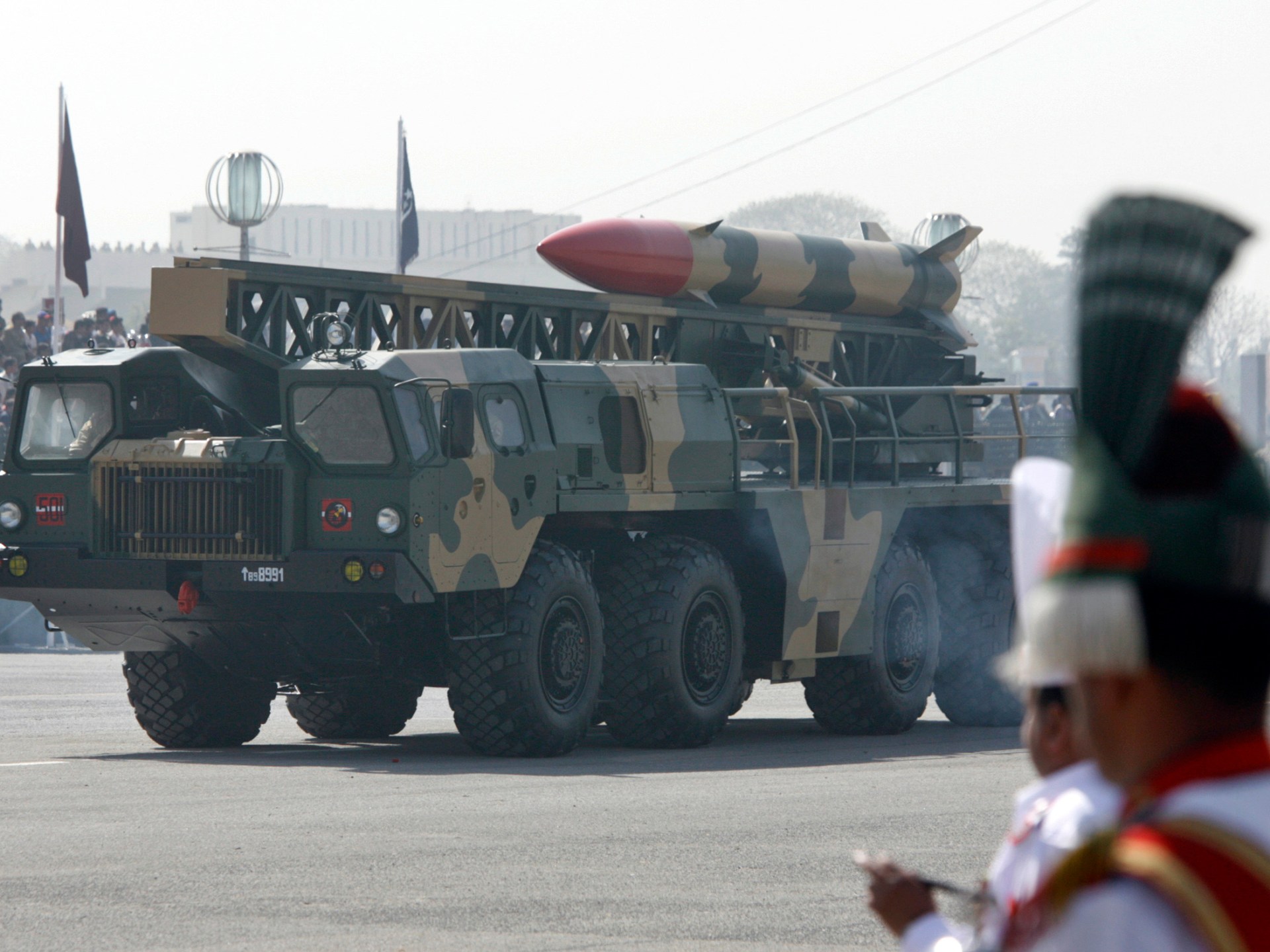
Pakistan said it struck multiple Indian military bases in the early hours of Saturday, May 10, after claiming that India had launched missiles against three Pakistani bases, marking a sharp escalation in their already soaring tensions, as the neighbours edge closer to an all-out war.
Long-simmering hostilities, mostly over the disputed region of Kashmir, erupted into renewed fighting after the deadly April 22 Pahalgam attack in Indian-administered Kashmir that saw 25 tourists and a local guide killed in an armed group attack. India blamed Pakistan for the attack; Islamabad denied any role.
Since then, the nations have engaged in a series of tit-for-tat moves that began with diplomatic steps but have rapidly turned into aerial military confrontation.
As both sides escalate shelling and missile attacks and seem on the road to a full-scale battle, an unprecedented reality stares not just at the 1.6 billion people of India and Pakistan but at the world: An all-out war between them would be the first ever between two nuclear-armed nations.
“It would be stupid for either side to launch a nuclear attack on the other … It is way short of probable that nuclear weapons are used, but that does not mean it’s impossible,” Dan Smith, director of the Stockholm International Peace Research Institute, told Al Jazeera.
So, how did we get here? What are the nuclear arsenals of India and Pakistan like? And when – according to them – might they use nuclear weapons?
How tensions have spiralled since April 22
India has long accused The Resistance Front (TRF) – the armed group that initially claimed credit for the Pahalgam attack, before then distancing itself from the killings – of being a proxy for the Lashkar-e-Taiba, a Pakistan-based armed group that has repeatedly targeted India, including in the 2008 Mumbai attacks that left more than 160 people dead.
New Delhi blamed Islamabad for the Pahalgam attack. Pakistan denied any role.
India withdrew from a bilateral pact on water sharing, and both sides scaled back diplomatic missions and expelled each other’s citizens. Pakistan also threatened to walk out of other bilateral pacts, including the 1972 Simla Agreement that bound the neighbours to a ceasefire line in disputed Kashmir, known as the Line of Control (LoC).
But on May 7, India launched a wave of missile attacks against sites in Pakistan and Pakistan-administered Kashmir. It claimed it hit “terrorist infrastructure”, but Pakistan says at least 31 civilians, including two children, were killed.
On May 8, India launched drones into Pakistani airspace, reaching the country’s major cities. India claimed it was retaliating, and that Pakistan had fired missiles and drones at it. Then, for two nights in a row, cities in India and Indian-administered Kashmir reported explosions that New Delhi claimed were the result of attempted Pakistani attacks that were thwarted.
Pakistan denied sending missiles and drones into India on May 8 and May 9 – but that changed in the early hours of May 10, when Pakistan first claimed that India targeted three of its bases with missiles. Soon after, Pakistan claimed it struck at least seven Indian bases. India has not yet responded either to Pakistan’s claims that Indian bases were hit or to Islamabad’s allegation that New Delhi launched missiles at its military installations.

How many nuclear warheads do India and Pakistan have?
India first conducted nuclear tests in May 1974 before subsequent tests in May 1998, after which it declared itself a nuclear weapons state. Within days, Pakistan launched a series of six nuclear tests and officially became a nuclear-armed state, too.
Each side has since raced to build arms and nuclear stockpiles bigger than the other, a project that has cost them billions of dollars.
India is currently estimated to have more than 180 nuclear warheads. It has developed longer-range missiles and mobile land-based missiles capable of delivering them, and is working with Russia to build ship and submarine missiles, according to the Center for Strategic and International Studies (CSIS).
Pakistan’s arsenal, meanwhile, consists of more than 170 warheads. The country enjoys technological support from its regional ally, China, and its stockpile includes primarily mobile short- and medium-range ballistic missiles, with enough range to hit just inside India.

What’s India’s nuclear policy?
India’s interest in nuclear power was initially sparked and expanded under its first prime minister, Jawaharlal Nehru, who was eager to use it to boost energy generation. However, in recent decades, the country has solidified its nuclear power status to deter its neighbours, China and Pakistan, over territorial disputes.
New Delhi’s first and only nuclear doctrine was published in 2003 and has not been formally revised. The architect of that doctrine, the late strategic analyst K Subrahmanyam, was the father of India’s current foreign minister, S Jaishankar.
Only the prime minister, as head of the political council of the Nuclear Command Authority, can authorise a nuclear strike. India’s nuclear doctrine is built around four principles:
No First Use (NFU): This principle means that India will not be the first to launch nuclear attacks on its enemies. It will only retaliate with nuclear weapons if it is first hit in a nuclear attack. India’s doctrine says it can launch retaliation against attacks committed on Indian soil or if nuclear weapons are used against its forces on foreign territory. India also commits to not using nuclear weapons against non-nuclear states.
Credible Minimum Deterrence: India’s nuclear posture is centred around deterrence – that is, its nuclear arsenal is meant primarily to discourage other countries from launching a nuclear attack on the country. India maintains that its nuclear arsenal is insurance against such attacks. It’s one of the reasons why New Delhi is not a signatory to the Nuclear Non-Proliferation Treaty (NPT), as it maintains that all countries uniformly disarm before it does the same.
Massive Retaliation: India’s retaliation to a first-strike from an aggressor will be calculated to inflict such destruction and damage that the enemy’s military capabilities will be annihilated.
Exceptions for biological or chemical weapons: As an exception to NFU, India will use nuclear weapons against any state that targets the country or its military forces abroad with biological or chemical weapons, according to the doctrine.
What is Pakistan’s nuclear policy?
Strategic Ambiguity: Pakistan has never officially released a comprehensive policy statement on its nuclear weapons use, giving it the flexibility to potentially deploy nuclear weapons at any stage of a conflict, as it has threatened to do in the past. Experts widely believe that from the outset, Islamabad’s non-transparency was strategic and meant to act as a deterrence to India’s superior conventional military strength, rather than to India’s nuclear power alone.
The Four Triggers: However, in 2001, Lieutenant General (Retd) Khalid Ahmed Kidwai, regarded as a pivotal strategist involved in Pakistan’s nuclear policy, and an adviser to the nuclear command agency, laid out four broad “red lines” or triggers that could result in a nuclear weapon deployment. They are:
Spatial threshold – Any loss of large parts of Pakistani territory could warrant a response. This also forms the root of its conflict with India.
Military threshold – Destruction or targeting of a large number of its air or land forces could be a trigger.
Economic threshold – Actions by aggressors that might have a choking effect on Pakistan’s economy.
Political threshold – Actions that lead to political destabilisation or large-scale internal disharmony.
However, Pakistan has never spelled out just how large the loss of territory of its armed forces needs to be for these triggers to be set off.
Has India’s nuclear posture changed?
Although India’s official doctrine has remained the same, Indian politicians have in recent years implied that a more ambiguous posture regarding the No First Use policy might be in the works, presumably to match Pakistan’s stance.
In 2016, India’s then-Defence Minister Manohar Parrikar questioned if India needed to continue binding itself to NFU. In 2019, the present Defence Minister Rajnath Singh said that India had so far strictly adhered to the NFU policy, but that changing situations could affect that.
“What happens in the future depends on the circumstances,” Singh had said.
India adopting this strategy might be seen as proportional, but some experts note that strategic ambiguity is a double-edged sword.
“The lack of knowledge of an adversary’s red lines could lead to lines inadvertently being crossed, but it could also restrain a country from engaging in actions that may trigger a nuclear response,” expert Lora Saalman notes in a commentary for the Stockholm International Peace Research Institute (SIPRI).
Has Pakistan’s nuclear posture changed?
Pakistan has moved from an ambiguous policy of not spelling out a doctrine to a more vocal “No NFU” policy in recent years.
In May 2024, Kidwai, the nuclear command agency adviser, said during a seminar that Islamabad “does not have a No First Use policy”.
As significantly, Pakistan has, since 2011, developed a series of so-called tactical nuclear weapons. TNWs are short-range nuclear weapons designed for more contained strikes and are meant to be used on the battlefield against an opposing army without causing widespread destruction.
In 2015, then-Foreign Secretary Aizaz Chaudhry confirmed that TNWs could be used in a potential future conflict with India.
In reality, however, experts warn that these warheads, too, can have explosive yields of up to 300 kilotonnes, or 20 times that of the bomb that destroyed Hiroshima. Not only could such explosions be disastrous, but some experts say that they might well affect Pakistan’s own border populations.
Conflict Zones
Gunmen kill 30 during ‘vicious’ attack in southeast Nigeria: Rights group | Gun Violence News
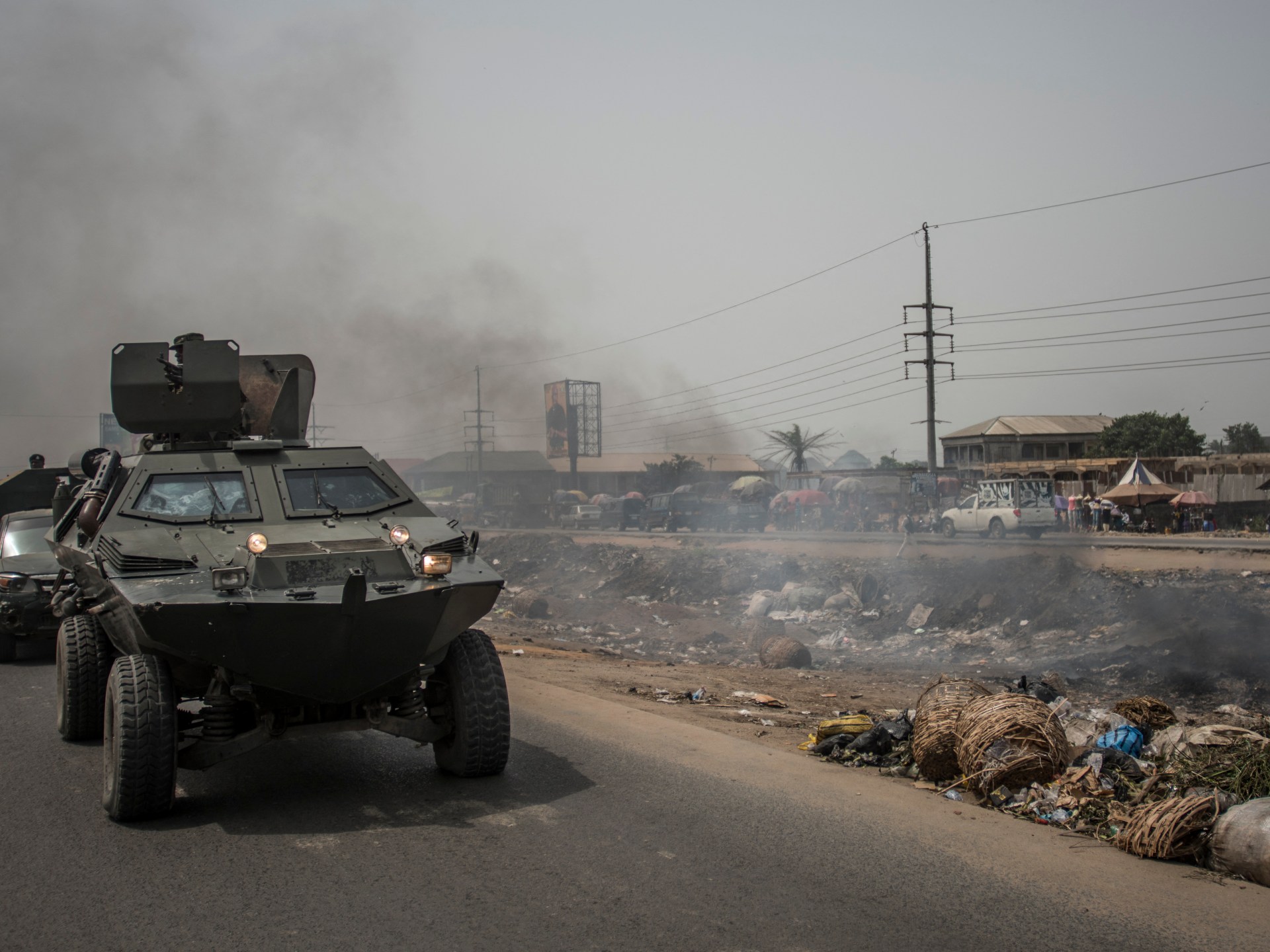
Attack in Imo State ‘shows callous disregard for the sanctity of life’, rights group Amnesty International says.
At least 30 people were killed when gunmen attacked travellers in Nigeria’s southeastern Imo State, according to Amnesty International.
The human rights NGO reported on Friday that more than 20 commuter vehicles and trucks were set ablaze during a “vicious attack” along the Okigwe-Owerri road the day before.
The attackers are suspected of being members of the banned separatist group, Indigenous People of Biafra (IPOB), Amnesty said.
“The attack … shows callous disregard for the sanctity of life. The gunmen blocked Okigwe-Owerri highway and areas of Umuna in Onuimo LGA unleashed violence in an utter show of impunity,” Amnesty wrote on X.
“The Nigerian authorities must immediately and transparently investigate this attack and ensure that the actual perpetrators are brought to justice. International law requires the Nigerian government to promptly investigate unlawful killings to bring perpetrators to justice,” it added.
Amnesty International strongly condemns the vicious attack on travelers yesterday 8 May 2025, along Okigwe-Owerri Road in Imo State, killing at least 30 people and burning over 20 commuter vehicles and trucks.
— Amnesty International Nigeria (@AmnestyNigeria) May 9, 2025
Imo police spokesperson, Henry Okoye, confirmed that the attack took place in the early hours of Thursday, but declined to comment on the death toll.
On Friday, Okoye told the Reuters news agency that one of the assailants had been killed by the police.
According to a police statement, the gunmen, operating in three groups, blocked the highway at 04:00 GMT and shot sporadically.
“A full-scale search and cordon operation is currently underway, with security operatives combing nearby forests and surrounding areas where the suspects are believed to be hiding,” the police said.
Nigeria’s Premium Times also reported that the police commissioner of Imo State, Aboki Danjuma, led a joint tactical team of security operatives to the scene.
According to Danjuma, the joint security team comprised personnel from Nigeria’s army, the police, and the State Security Service.
The IPOB, which the Nigerian government has classed as an outlawed organisation, has been campaigning for the secession of southeastern Nigeria, where the majority of people belong to the Igbo ethnic group.
Following the late 1960s civil war that engulfed the Biafra region, killing more than one million people, separatist groups have continued to push for an independent state from the southeast and in some parts of the south of Nigeria.
Conflict Zones
Israel intercepts missile launched by Yemen’s Houthis | Houthis News
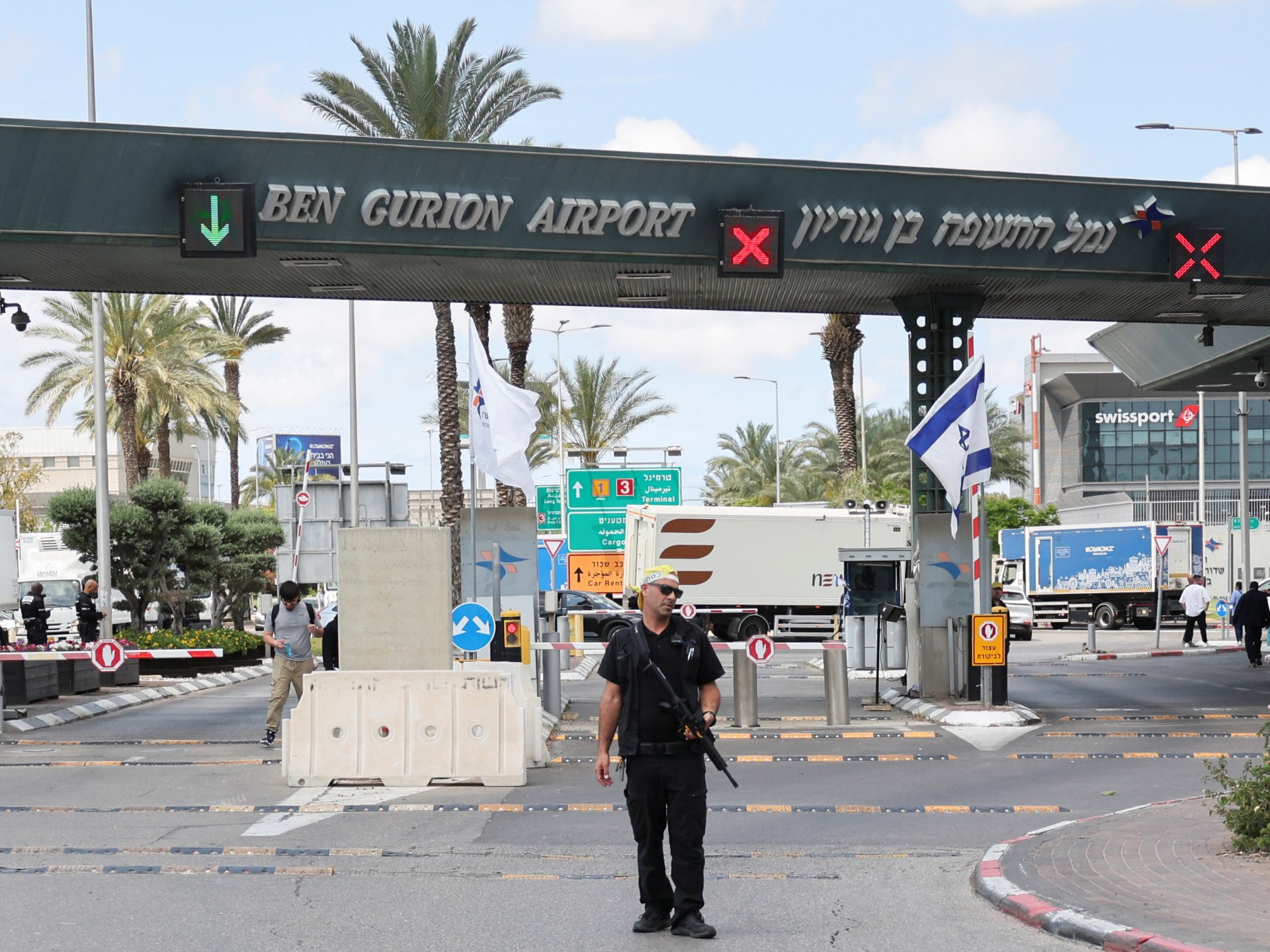
The incident comes days after Oman said it mediated a ceasefire deal between the US and the Houthi group.
Air raid sirens were heard in Israel as a missile was launched towards the territory by Yemen’s Houthis, who say they are retaliating against Israeli sites in solidarity with Palestinians in Gaza.
Israel’s military said it intercepted the projectile on Friday using its air defence systems.
The incident came days after Oman said it mediated a ceasefire deal between the United States and the Houthis, with the Yemeni group saying the agreement did not include Israel.
Houthi rebels fired a “hypersonic ballistic missile” towards Ben Gurion airport near Tel Aviv, while also claiming a drone attack “targeting a vital Israeli enemy target” in the same area, according to the group’s military spokesperson, Yahya Saree.
Israeli media reported that air raid sirens were sounded in several areas across central Israel, with people receiving early warning mobile messages about the missile attack.
Israeli Defence Minister Israel Katz said that Israel would respond forcefully in Yemen and “wherever necessary”, describing the Houthi missiles as “Iranian”.
There were no reports of injuries or damage from the missile attack, according to a military statement.
US President Donald Trump announced on Tuesday that his country would stop bombing Yemen as the Houthis had agreed to stop their attacks on US ships in the Red Sea.
But the Houthis have continued to fire missiles and drones towards Israel, most of which the Israeli military says it has intercepted, without casualties or serious damage occurring.
The Houthis have attacked numerous vessels in the Red Sea linked to Israel and its allies in what they state is an act of solidarity with Palestine.
According to Israeli media, the Houthi group has launched 28 ballistic missiles and dozens of drones at Israel since March 18, when Israel resumed its genocidal war on Gaza.
Israel has been waging a devastating war on the enclave since October 2023, killing more than 50,000 Palestinians, after a Hamas-led attack into southern Israel that month.
-

 Lifestyle2 days ago
Lifestyle2 days agoWorld Video Game Hall of Fame inducts Defender, Tamagotchi, GoldenEye 007 and Quake
-
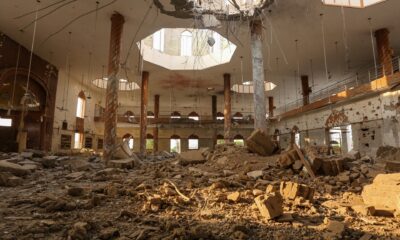
 Conflict Zones2 days ago
Conflict Zones2 days ago‘Nowhere to go’: Kashmir violence escalates amid India-Pakistan crossfire | Conflict News
-
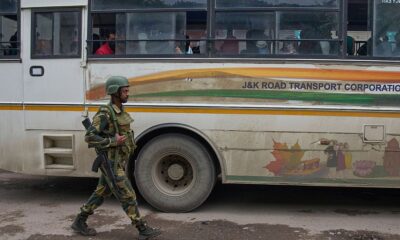
 Africa22 hours ago
Africa22 hours agoHeavy shelling over Kashmir Line of Control leaves at least 5 civilians dead
-

 Europe22 hours ago
Europe22 hours agoPope Leo XIV urges cardinals to make themselves ‘small’ in first mass as pontiff
-
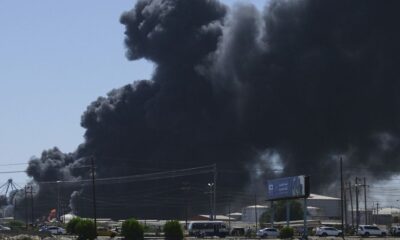
 Africa20 hours ago
Africa20 hours agoSudan: Port Sudan hit by drone strikes for sixth consecutive day, UN sounds alarm
-

 Europe1 day ago
Europe1 day ago‘Father of haute couture’: The man who pioneered fashion as we know it
-

 Middle East19 hours ago
Middle East19 hours agoUS foundation eyes takeover of Gaza aid | Israel-Palestine conflict News
-
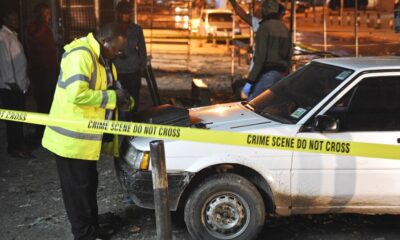
 Africa19 hours ago
Africa19 hours agoMissing South African journalist and partner confirmed dead




